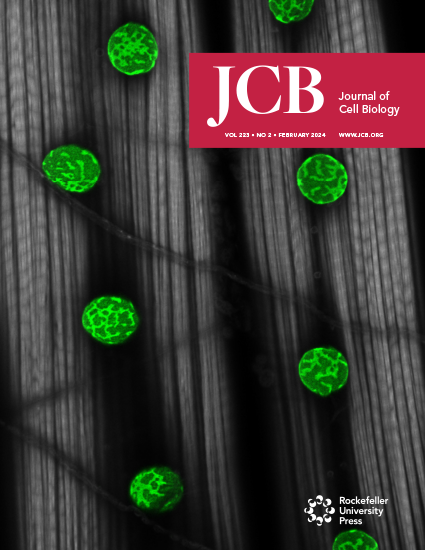Atg9是溶酶体修复的保守调节因子。
IF 7.4
1区 生物学
Q1 CELL BIOLOGY
引用次数: 0
摘要
ATG9跨膜蛋白搅乱脂质以调节自噬过程中吞噬细胞的形成。Peng等人(https://doi.org/10.1083/jcb.202411092)和De Tito等人(https://doi.org/10.1101/2024.07.23.604321)最近的两项研究发现,ATG9是秀丽隐杆线虫和人类细胞中溶酶体修复的保守调节因子,但这些分类群之间的修复机制存在差异。本文章由计算机程序翻译,如有差异,请以英文原文为准。
Atg9 is a conserved regulator of lysosome repair.
The ATG9 transmembrane protein scrambles lipids to regulate phagophore formation during autophagy. Two recent studies from Peng et al. (https://doi.org/10.1083/jcb.202411092) and De Tito et al. (https://doi.org/10.1101/2024.07.23.604321) identify ATG9 as a conserved regulator of lysosome repair in Caenorhabditis elegans and human cells, but differences in repair mechanisms exist between these taxa.
求助全文
通过发布文献求助,成功后即可免费获取论文全文。
去求助
来源期刊

Journal of Cell Biology
生物-细胞生物学
CiteScore
12.60
自引率
2.60%
发文量
213
审稿时长
1 months
期刊介绍:
The Journal of Cell Biology (JCB) is a comprehensive journal dedicated to publishing original discoveries across all realms of cell biology. We invite papers presenting novel cellular or molecular advancements in various domains of basic cell biology, along with applied cell biology research in diverse systems such as immunology, neurobiology, metabolism, virology, developmental biology, and plant biology. We enthusiastically welcome submissions showcasing significant findings of interest to cell biologists, irrespective of the experimental approach.
 求助内容:
求助内容: 应助结果提醒方式:
应助结果提醒方式:


